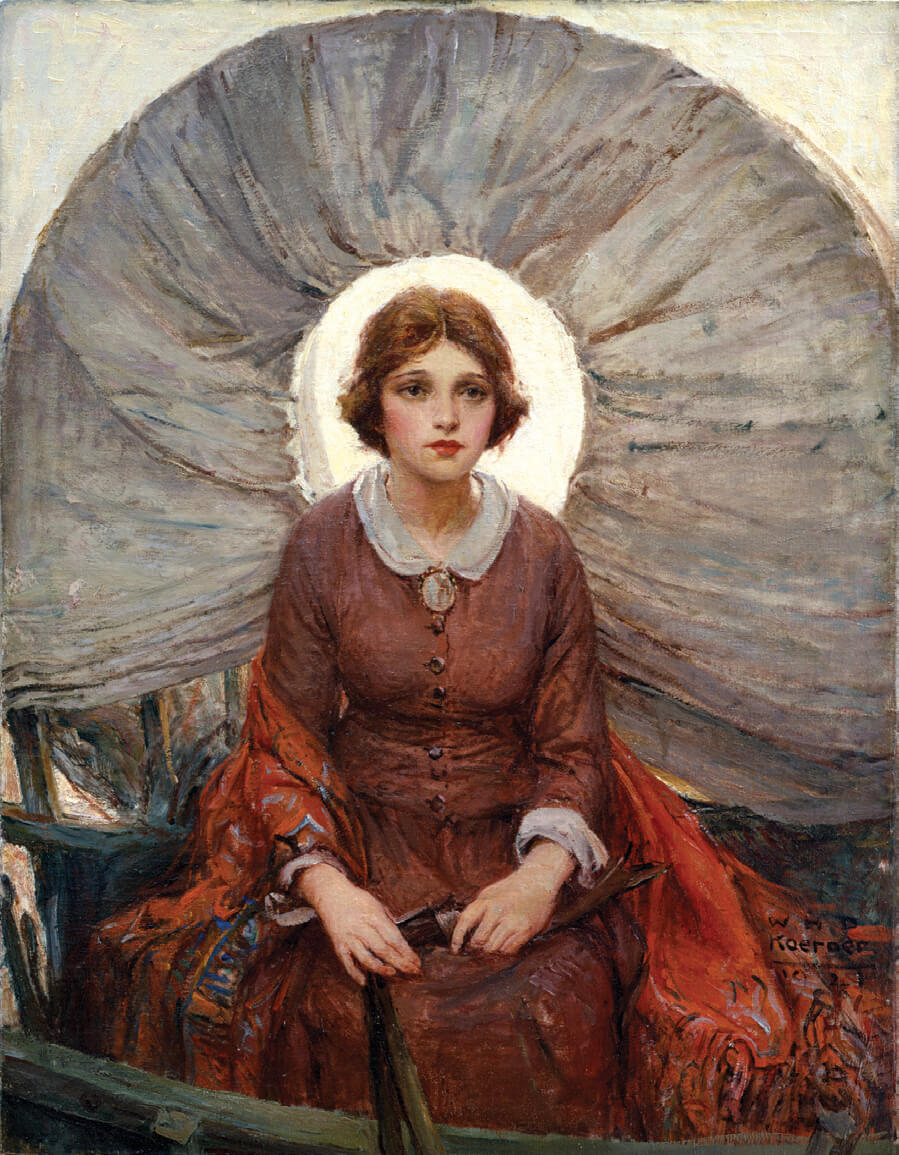
10 May Publisher’s Note: Madonna of the Prairie
William Henry Dethlef (W.H.D.) Koerner [1878–1938] was one of the great illustrators and artists of the 1910s and 1920s. Today, we would call him an “influencer” (as great artists often are!). He helped shape Americans’ perception of the West by creating some 250 illustrations of Western life. His work was published in Good Housekeeping, McCall’s, Ladies’ Home Journal, and The Saturday Evening Post.
This powerful painting, Madonna of the Prairie, is perhaps Koerner’s most iconic work. Filled with melancholy, this stoic, almost haunting, pioneer woman in a Conestoga wagon depicts Western migration, when families braved the arduous and sometimes treacherous journey to their promised land.
The subject is Molly Wingate, the heroine of Emerson Hough’s novel The Covered Wagon. Molly traveled the Oregon Trail with other pioneers on a wagon train. In Madonna of the Prairie, Koerner used the covered wagon to form a halo around Molly’s head, clearly a nod to her saintly inner strength. This illustration graced the dust jacket of the 1922 novel and appeared on the cover of The Saturday Evening Post on April 1, 1922.
Koerner had a great passion for the West. In the book The American West Reimagined by Larry Len Peterson, the artist’s daughter Ruth Koerner Oliver says: “In the 1920s, my family would travel west to Phil Spear’s Rimrocks Ranch, a working cattle ranch 26 miles west of Lodge Grass, Montana, toward the Big Horn Mountains on the Crow Indian Reservation. … Montana was always a promise of what the West meant to my father. … My father always felt the strong urge to see, first-hand, the West — the color, the adobe earth, the dress of the different Indians, the excitement of the cattle drive. All this he would carefully but quickly sketch, filling his notebook with colorful pages he then used in this studio to create his full paintings.”
Koerner’s art told stories with an authenticity that was second to none. The stark simplicity of Madonna of the Prairie gives power to the artist’s message. Artists often communicate with their viewers in ways that cannot be expressed with words. They have a language that can be incredibly spiritual and sensitive. Koerner’s sensitivity succeeded masterfully here!
Tim Newton, Publisher
tim@westernartandarchitecture.com






No Comments